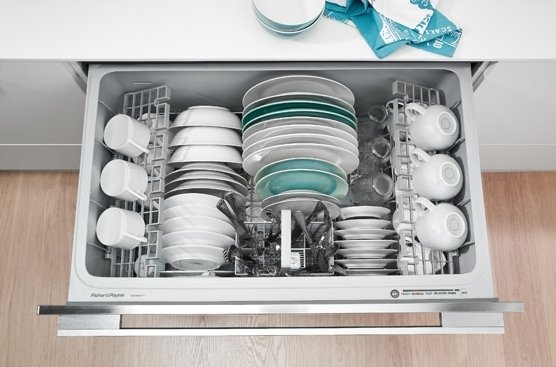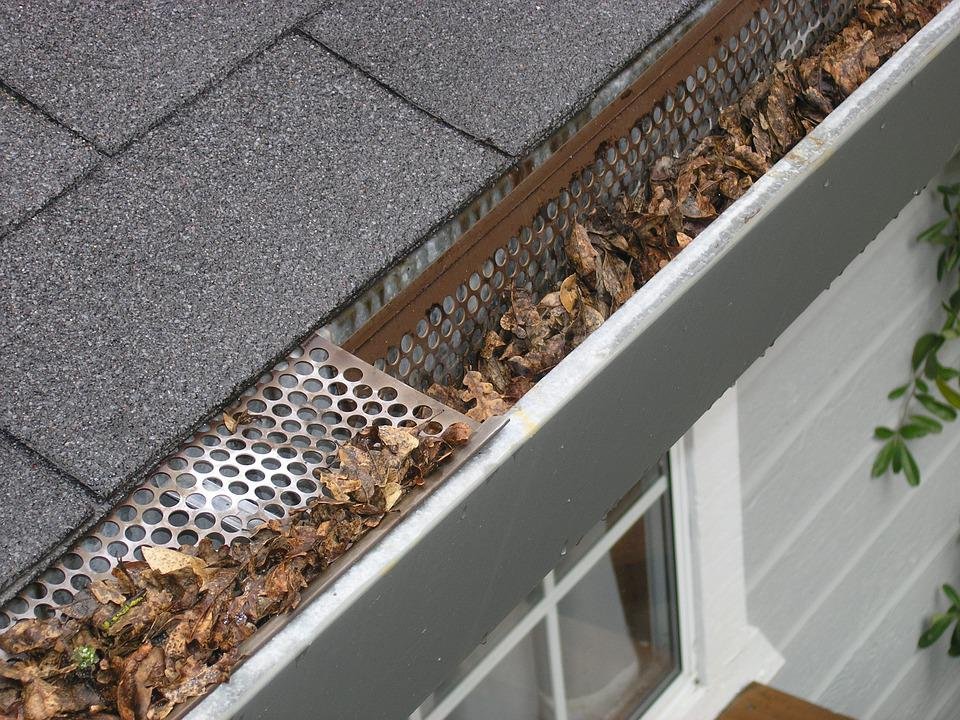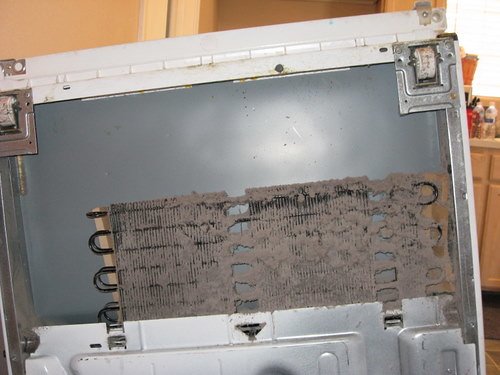Can Your Washer & Dryer Get Rid of These Pests?
One of the things we always love about summer is going out and exploring. New experiences, new cities, new friends and new foods! We even love bringing back souvenirs. What we don’t like to bring back are tiny bitey things that nest in our clothes, our bed or our hair. Fleas, lice, ticks and bed bugs are some of the worst travel companions you can pick up in the summer. While most of us take precautions, sometimes those precautions fail, and you wind up having to get rid of one or many of the little bugs.
For many of us the first answer is to toss everything into hot water in the washer and then run it through the dryer. But is that always the best answer? Let’s take a look together.
Can Your Washer or Dryer Kill Fleas?
Fleas are six-legged wingless creatures that will go after your pets if given half a chance. They love to live in warm, humid areas that are mostly undisturbed. So your pet and their bedding is ideal! An adult female can lay as many as 50 eggs in a single day, and live up to 100 days when left alone. While they won’t live on humans, they can jump up to 13 inches, which means they can easily transfer to you and start to bite on you as well as your pet.
What are you to do then? Will showering yourself and your pet then throwing all of your soft goods into the washer and dryer solve the problem? No, but it is a good place to start. The hot water in your washer will clean the bugs and any eggs out of your clothes, bedding and all the rest. If you’ve just gotten home from travelling and noticed the problem, go ahead and wash everything you took with you on your trip, and give your pet a good combing and treatment with a flea dip. If you’re lucky, you’ve caught the problem in time and don’t have anything else to worry about.
If that doesn’t solve the problem, or if it’s been a few days and you’re just noticing the issue, plus “flea dirt” around the house, you’ll need to kick things up. Start with the same steps as before, wash everything, and especially your pet. Now start on a deep clean. Take your pets outside and move all of your furniture around. This gets rid of any hidden areas and exposes them to light and the vacuum you’re going to be grabbing. Now vacuum down everything. If you can’t wash it, vacuum it. When you’re done, either throw away the bag or thoroughly clean the container. Vacuuming is more than just cleaning in this case, you’re also attacking any larvae that are in their coocoons. The cocoons are resistant to insecticides, so now you can go back through your home and spray things down with the appropriate pet and human safe chemicals, knowing that you’ve gotten rid of them.
You will need to repeat these steps every other day, for at least 10 days, possibly up to a month, in order to get rid of the infestation, depending on the severity. Make sure to wash your pet’s bedding every week as well.
Short answer: No, your washer and dryer alone won’t kill all of your fleas, but it will cut out a large portion of the problem.
Can Lice Be Killed By Your Washer or Dryer?
Lice are another six-legged menace. Lice, unlike fleas, don’t jump. You don’t have to worry about them leaping from person to person, but you do need to worry about them crawling. It’s why lice can go through an elementary school or daycare like wildfire. Fortunately, the CDC has said that head lice don’t survive for long off the human head.
So, if you had one of the children in your life accidentally bring lice into your home, are you to get rid of it? In this case? Yes, your washer and dryer can kill almost everything.
If the issue is restricted to the bed, this will be the easiest scenario. Start by stripping the bed, down to the bare mattress. Toss everything that can be washed directly into the washer and run it on hot water and then high heat for at least 45 minutes. If it’s something delicate, like that embroidered case from your great-grandmother? It’s ok, just toss it into the dryer and run it for 45 minutes. The heat is what is going to kill the louse and the nits. Everything that can go through one of these two steps can be used immediately afterward.
Anything that cannot be washed or dried on high heat, stuff it into a garbage bag. These are going to sit for 10 days.
This is, unfortunately, going also to include your mattress, but you’ll need to do one more step before that. Take your vacuum and go carefully over every inch of it. Any creases, folds or other places that a louse can hide or burrow need to be gone over before you put it into the bag.
After 10 days, you can vacuum everything again and hopefully have gotten rid of your very unwelcome guests. If not, repeat the process as needed, and inspect other soft surfaces around your home as the potential cause of the re-infestation.
Short Answer: Yes! Your washer and dryer can kill lice, although it shouldn’t be the only step you take in getting rid of them.
Will Your Washer or Dryer Kill Ticks?
For those of you who regularly venture outdoors, we hear you. We know ticks are *technically* around all year. However, they do tend to be the *most* active between April and September. While these 8 legged beasties can carry some dangerous diseases, you don’t have to confine yourself inside during the warmer months, even in Texas. You can protect yourself, your pets and your home rather easily. Fortunately, most of them cannot survive and reproduce indoors, according to experts. So your goal is how to get rid fo them if you have you have brought one or more in with you.
To start with, check yourself and your pets as soon as you get home. Look under arms and legs, behind ears (or inside them for your fuzzy friends), inside your belly button, between your legs and in your hair. After that, hit the showers. If you’ve been to an area that you know is likely to have ticks, but they didn’t latch on, a shower is a great way to get rid of them.
What about your clothes, though? For that, toss them in the dryer first on a high heat setting for at least 10 minutes. The high heat not only kills the ticks, it also kills off any young. Since ticks prefer areas with high humidity, not only will they not like the inside of your home, they really won’t like your dryer. If you went camping, you should be able to check the labels and do the same to your backpacks and gear as well. From here you can wash your clothing as normal and pack away your outdoor gear like you usually would.
Short Answer: Yes! Your dryer can kill any ticks in your clothing or camping gear, although it should still be paired with prep-work before you go out and careful checks once you come home.
Are Bed Bugs Killed In Your Washer or Dryer?
Our final pest is bed bugs. Just thinking about staying in a hotel with them is enough to make you shiver. And don’t think that just because you prefer the nicest hotels means you’re safe. It’s not agree that very few cases of outbreaks are coming from hotels, the vintage ottoman you just picked up, might be a different matter. Many items like clothing, boxes and secondhand furniture can be a source of bed bug infestations, as they enjoy hiding anywhere people are.
That’s why it’s not how clean your house is that is going to protect you, it’s being careful about treating things that come into your home.
If you or someone in your home is waking up with bitchy red bites, especially under their clothes, it could be bed bugs.
Your first step is going to be to call professionals. Not only do you need to confirm that it’s bed bugs, but you also need to squash the problem as quickly as possible. The longer you wait, the more the bugs can spread within your home, and if you wait too long, outside of it.
Make sure to get written estimates from anyone you’re considering. They should be licensed experts, able to offer you a written plan of what pesticides they intend to use, what traps or heat treatments and how they’ll use it. While you can purchase over the counter pesticides, they are dangerous to use without proper guidance and it’s unlikely that you’ll be successful on your own.
When talking to a company, ask all of the questions. A good company will answer them, and a company that won’t answer or tries to pressure you into setting an appointment, is a company you can weed out. Always ask them about their success rater and if their treatment comes with a guarantee. If it doesn’t, or if they say you don’t need one, that’s another company weeded out of consideration.
While you’re waiting on the professionals, there’s still plenty you can do, unless you want to burn everything and start from scratch as one of our team suggested.
Start by sorting anything that’s infested, bedding or clothing, into clean plastic bags. Sort them based on how they need to be washed, and also include a dry-clean only pile. Then wash and dry everything at the hottest temperature the material can handle.
While some bugs will die thanks to a dip in your washer, it’s going to be the dryer that kills them. You’ll need at least 60 minutes in the dryer to get rid of them when it comes to the items that you can wash.
After they’re dried, put everything into fresh clean bags, and do not remove them until the infestation is successfully eliminated.
Thoroughly vacuum everything. Rugs, floors, furniture, beds, any and all cracks and crevices. By cutting down on your existing population, you’re cutting down on the number that can bite you or repopulate. After you’re done vacuuming, put all of the bags or debris into a tightly sealed bag and put it into an outside garbage bin.
Now it’s time to search all of your furniture. Again, you’re looking for cracks, crevasses, or places that don’t otherwise see much light, like the sides of your mattress or behind the headboard. Don’t forget about inside the beds as well. Look for black stains, blood and fecal matter from the 8 legged biters, discarded skins and the bugs themselves.
When the professionals have come and done their thing, follow any and all directions that they have, and enjoy having your home free of pests again.
Short Answer: Nope. Washing alone will not get rid of a bed bug infestation. However it is a very important step in the process.
Have you encountered any of these summer bugs? How did you handle getting rid of them? Did we miss a step? Let us know over on our Facebook Page.
Three out of four of our summer bugs can be killed in the washer and dryer, but what if your washer or dryer aren’t functioning properly? That is where we come in. While we can’t protect you from fleas, ticks, bed bugs or lice, Appliance Rescue Service can ensure that your washer and dryer are working properly. You can call us ((214) 599-0055) or go to our contact page to set up an appointment that works with your schedule. We’ll work with you to find the best time to send one of our experts to diagnose and solve the issue. At Appliance Rescue Service, getting your home running smoothly is our priority.
























